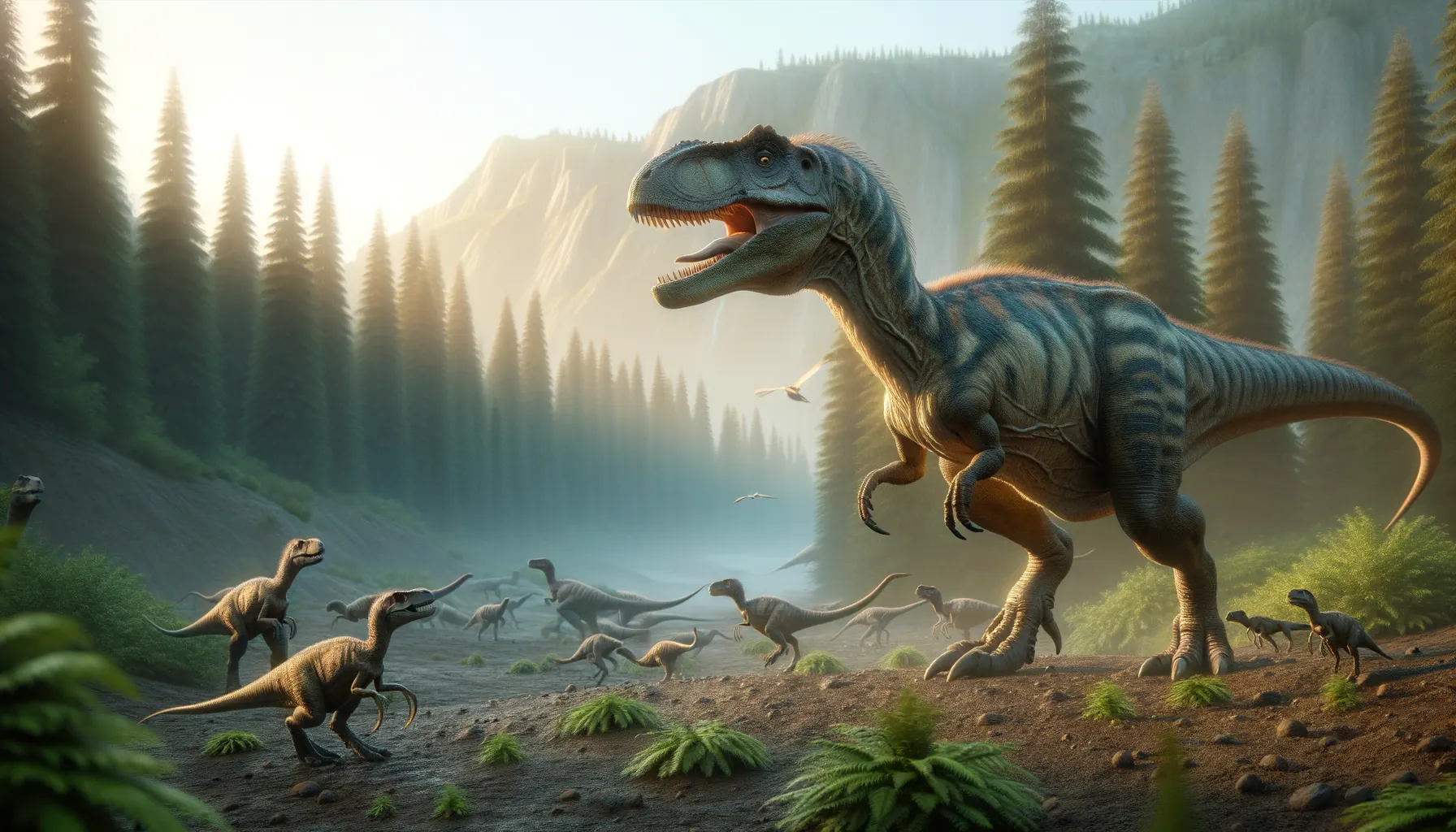
Gobivenator
A swift predator of the ancient Cretaceous plains.
Period
Cretaceous
Length
Around 2 meters in total length.
Height
About 1 meter tall at the hip.
Weight
Estimated to weigh around 20 to 30 kilograms.
Gobivenator was a nimble and lightly built dinosaur closely related to the swift-moving dromaeosaurids. It lived during the Cretaceous period, primarily in what is now modern-day Mongolia. With a diet that likely consisted of small prey, this dinosaur was well-adapted to its environment. Its discovery provided important insights into the diversity of small theropod dinosaurs in Asia during its time.
Diet
Gobivenator was a carnivore, primarily feeding on small vertebrates. Its sharp teeth and agile build suggest it was adept at catching quick-moving prey.
Hunting
This dinosaur likely relied on ambush tactics and quick bursts of speed to capture its prey. Its keen senses would have assisted in locating and tracking smaller animals around it.
Environmental challenges
Gobivenator inhabited a semi-arid environment with fluctuating resources and weather patterns. Competition for food would have been intense, particularly in times of scarcity. Moreover, environmental changes over time might have pressured it to adapt or face increased threats of extinction.
Speed
Moderate, allowing for short bursts of speed.
Lifespan
Likely lived for several decades.
First discovery
Discovered in Mongolia in 2012.
Fun Facts
- Gobivenator is named after the Gobi Desert in Mongolia where it was discovered.
- This dinosaur lived during the Late Cretaceous period, around 70 million years ago.
- Gobivenator was a theropod, which means it was a bipedal carnivore.
- Despite being a predator, Gobivenator was relatively small, measuring about 1.7 meters in length.
- Its skull was particularly well-preserved, giving scientists lots of information about its head and brain structure.
- Gobivenator belonged to a group of dinosaurs closely related to the famous Velociraptor.
- The discovery of Gobivenator has helped paleontologists understand more about the evolution of small theropod dinosaurs.
Growth and Development
Juveniles likely grew rapidly to avoid predation, reaching near-adult size quickly. This growth phase would be crucial to their survival prospects in a predator-rich landscape. Development likely included learning hunting skills and social behaviors from adult members of the species.
Habitat
Gobivenator thrived in open plains and forested environments, offering both cover and hunting grounds. These habitats provided opportunities to encounter small prey and evade larger predators. Access to water sources would have been essential, influencing its range and habits.
Interaction with other species
Gobivenator likely competed with similar-sized theropods for food. While it acted as a predator, it also had to watch out for larger carnivores that could prey on it. Its presence might have influenced the behavior and evolution of small prey species.
Natural lifespan
Gobivenator likely had a lifespan of 20 to 30 years in the wild.
Reproduction
Like many theropods, reproduction likely involved laying eggs, potentially in a communal nesting site. Parent Gobivenators might have guarded their nests to ensure the safety of their young from predators. Hatchlings were probably precocial, capable of some degree of independence soon after birth.
Social behaviour
Gobivenator might have exhibited some level of social behavior, either hunting in pairs or small groups. This cooperation could have increased hunting success and offered protection against larger predators. Social interactions also supported learning and skill development among younger members.
Fossil locations
The first fossils were discovered in the Gobi Desert of Mongolia. These sites have provided a wealth of information regarding the ecosystem in which Gobivenator lived. Other potential discoveries across Asia could further expand our understanding of its distribution.
